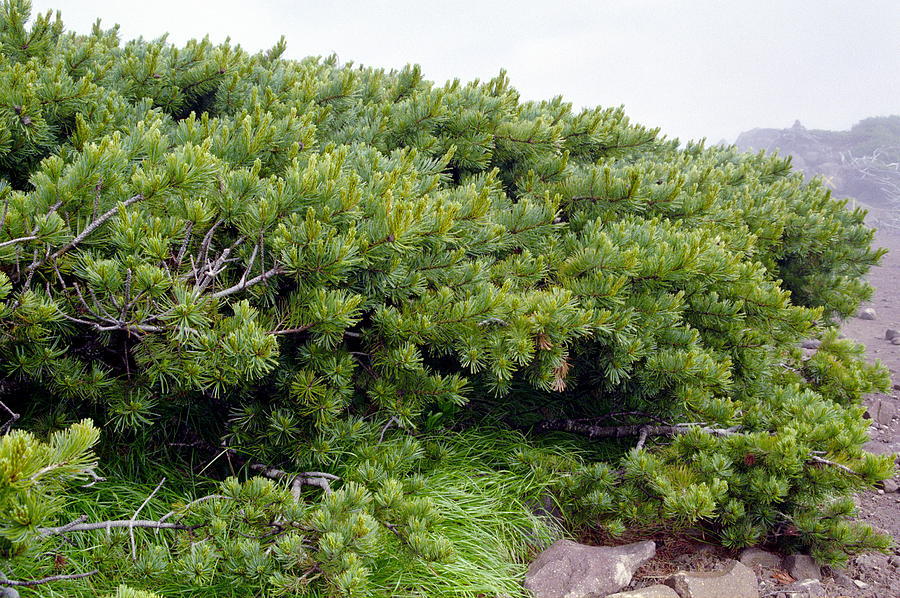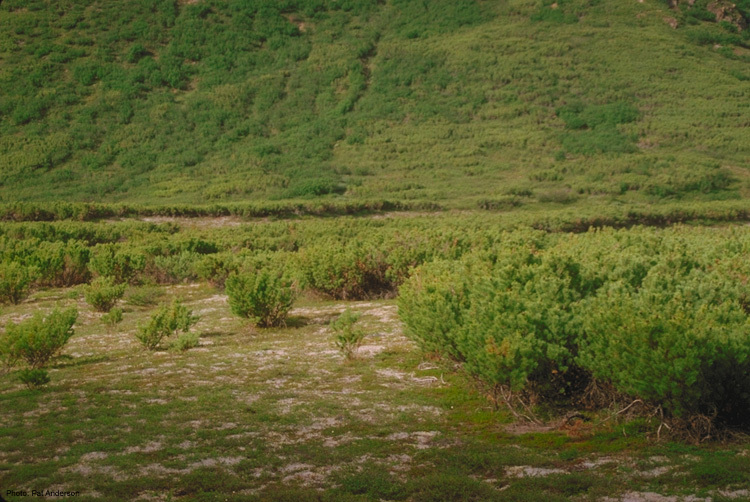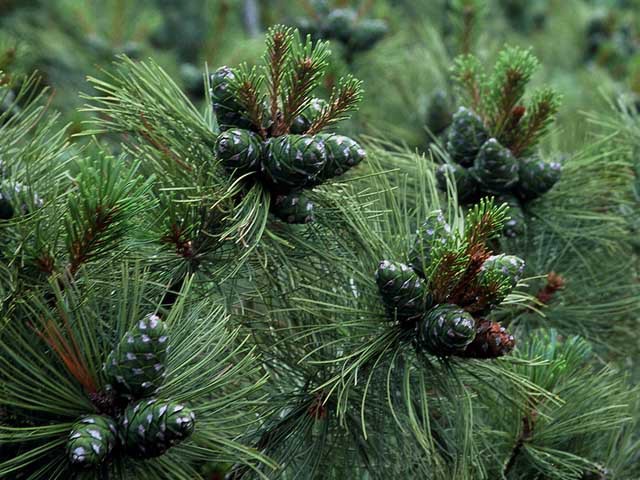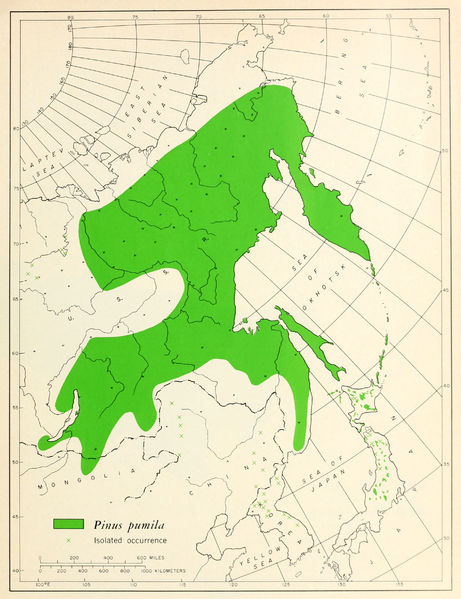subgenus Strobus (Lemmon), section Quinquefoliae (Duhamel), subsection Strobus (Loudon).
Pinus pumila, described in 1859 by Eduard August von Regel (1815-1892), in Index Seminum (St. Petersburg), is commonly known as Japanese stone pine, or Siberian dwarf pine; as well as КедÑ'овый Ñтланик (kedrovy stlanik / creeping cedar) in the Russian language; as СибиÑ'ийн давжаа наÑ'Ñ (Sibiriin davjaa nars) in Mongolian; ãƒã‚¤ãƒžãƒ„ (Haimatsu) in Japanese; Šƒæ¾ (YÇŽn sŠng) in Chinese; and as 눈잣나무 (nunjasnamu / snow pine) in Korean. The species name translates into "dwarf" in the Latin language.
Description. Japanese stone pine is a shrubby, evergreen, coniferous species of tree that grows to mature heights of 20 feet (6 m), usually with creeping branches extending up to 35 feet (10 m).
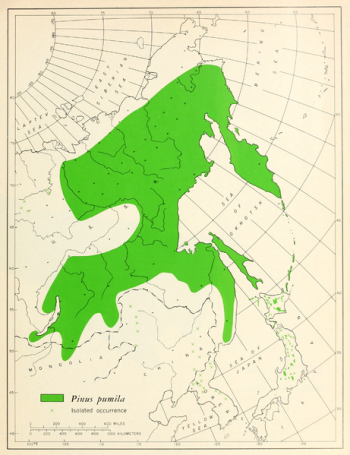
Distribution. This species is native to Japan, North Korea, northern Mongolia, Siberia (east from Yenisey River); and China - Heilongjiang, Jilin, Nei Mongol, growing at elevations of 3,200 to 7,500 feet (1,000 - 2,300 m) above sea level. Forms broad belts just above timberline, pure or with alders or willows on eastern shores. In eastern and northeastern parts of its area and in cold intermontane valleys, it descends to sea level.
This is a pine well adapted to the extreme climate which prevails above the line of forests of Pinus sylvestris in the southern part of its range, while it replaces Larix gmelinii or birch forests at high altitude in the northern regions. It can be found scattered in the under-story of these forests, too, especially on exposed mountain slopes close to the summer snowline it forms extensive, dense thickets. Its seeds are distributed by birds in the family Corvidae.
Hardy to USDA Zone 1, cold hardiness limit below -50°F (-45.6°C), making it one of the most cold-hardy trees known.
